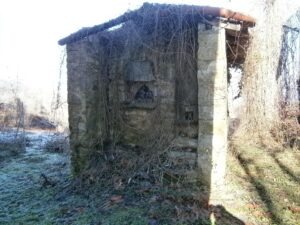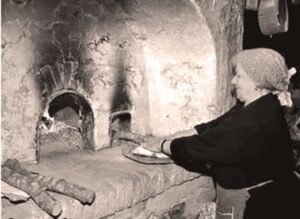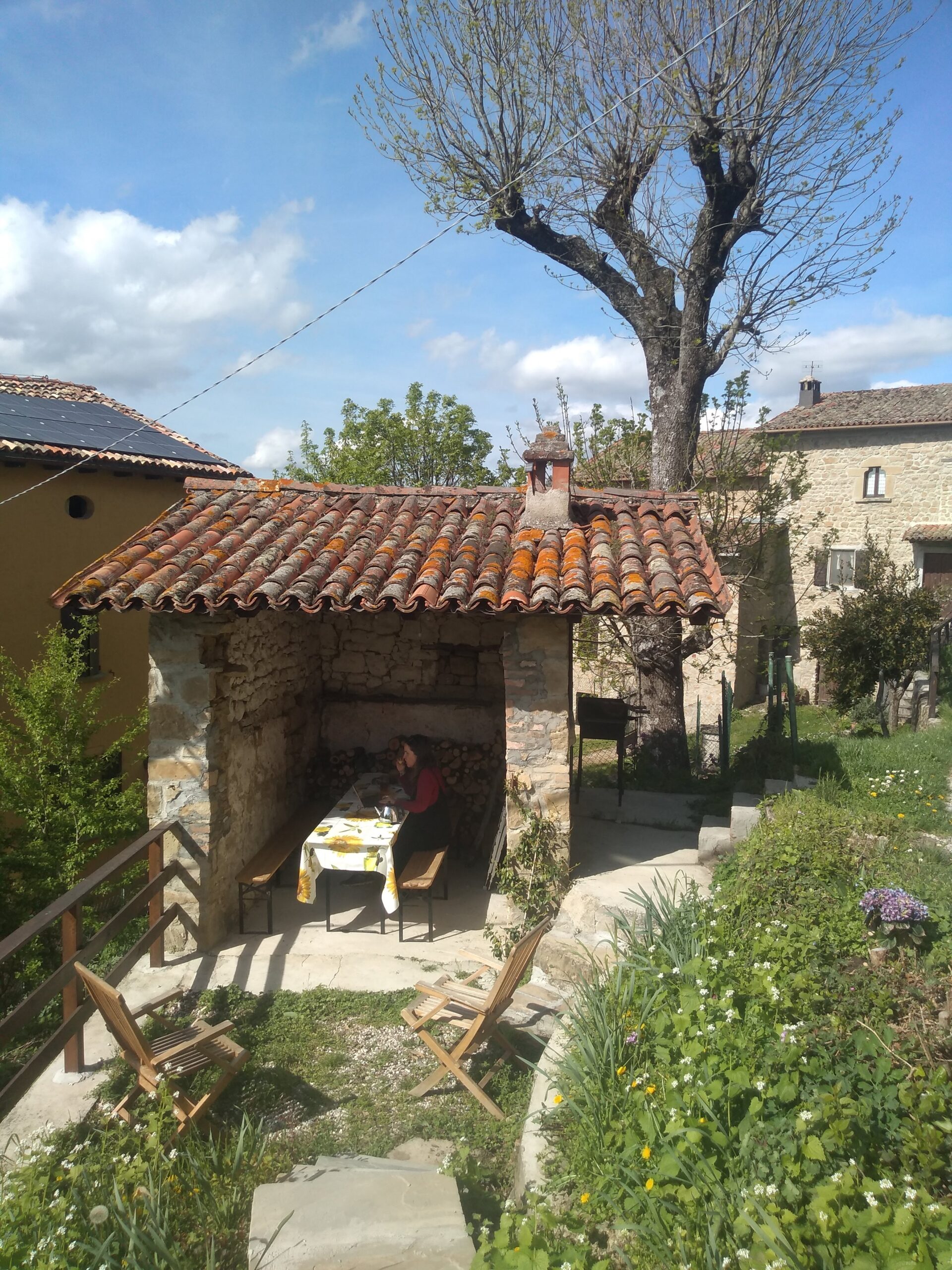
We’ve bought a forno. Or rather, we’ve bought a house with a forno. Again.
Our first house in Italy came with a forno too. A forno is a stone building, about three metres by three, with a gabled roof usually overgrown with weeds and grass. There’s sometimes still an oven tucked up in the top floor – but more on that in a bit. Thick wooden beams hold up two layers of stone, with a sandwich of straw and clay in between. On top of that, a domed wood-fired oven has been lovingly bricked into place, with an opening shaped like a miniature Gothic church window.
Visitors from the Netherlands spot it instantly.
“You’ve got a pizza oven!”
No, we have not.
The edifice – containing the actual oven on its first floor – has two storeys. Now, before your imagination runs away with you: each floor is less than one and a half metres high. The ground floor has a food and water bowl. This is where some livestock was kept. Inside the rather thick walls the available space is something like nine square metres. We’re not exactly talking Versailles for chickens and pigs here.
Annarita, the longest-standing resident of our borgo, can get almost wistful talking about it. How this forno was once the heart of the borgo – a little neighbourhood community. When she was young, back in the 1950s, the oven still was communal property. Every home had a hearth in the kitchen, sure, but baking bread together made far more sense. You fired it up once, and everyone’s loaves went in. Chickens, rabbits, pigeons, even the pig – all kept in pens nearby. Warm, practical, and handy for when you needed to slow-cook a stew or a ragù which went in the oven once the bread was done.
The problem is that most forni haven’t been used these past fifty years. They’ve crumbled into disrepair. Roofs leak, if they exist at all. The actual ovens are half-collapsed, and the animal pens have become dumping grounds for whatever no one knows where else to put.
Ours is no exception. It stands in a borgo – a cluster of houses, somewhere between four and fifteen. Anything more, would be called a paese – a village. These days, a lot of borgi are practically deserted. In Casigno, our borgo, half the houses are lived in year-round. The rest are seconda casa – holiday homes. In other borgi, that ratio can be one in five, so we’re actually doing quite well. However, even our part-time residents seem to regard il forno as shared property, which means every passerby has to have a peek inside.
I hear voices outside. From our kitchen window, I see Giancarlo – our “occasional neighbour” from the Veneto – standing at the forno with two strangers. This is one of those moments when we try very hard not to be outside. Or, at the very least, not available for conversation.
Unless, of course, we feel like hearing again why we ought to restore it, how the forno used to be the gathering place for the entire community, and how you can make absolutely incredible pizza in it. That last part, naturally, only if you know how to fire up a wood oven.
“Of course, it’s an art. My nonna and nonno – grandma and grandpa – still knew how to do it.”
So yes, we’ve bought a forno, but we’re going to do something entirely different with it. This will, undoubtedly, result in some raised eyebrows and the occasional bit of muttering.
Our forno – the village social hub – will at least retain one of its ancient functions. It’ll still be the place where the gossip begins.
Two weeks later, I’m putting the finishing touches on the restoration. Annarita watches as I dump the last wheelbarrow of rubble into our garden.
“Non vorrei un forno?” No, we didn’t want a functioning bread oven. But what we’ve got now is a fantastic roofed outdoor space. Ideal for dining — and for writing, of course.
She nods approvingly.
“Meglio.” Better?
“Yes, much better.”
Turns out, her memories of waiting around the oven weren’t that magical after all.

